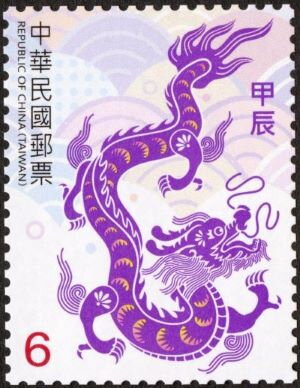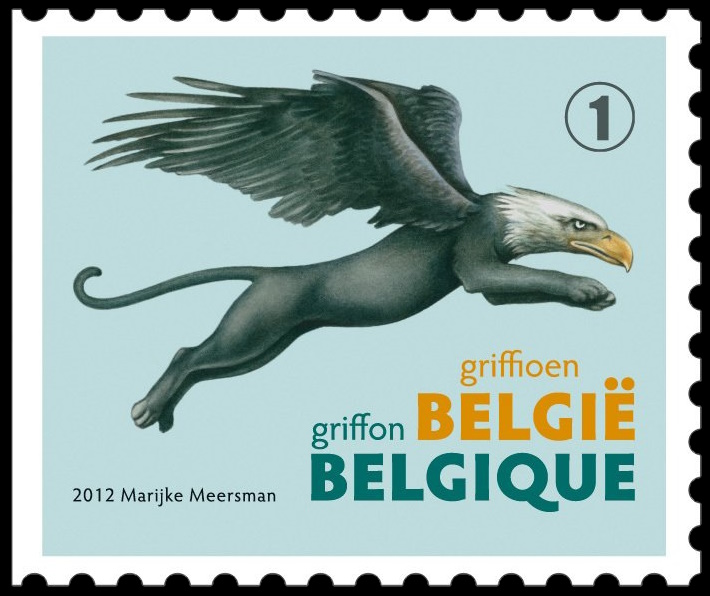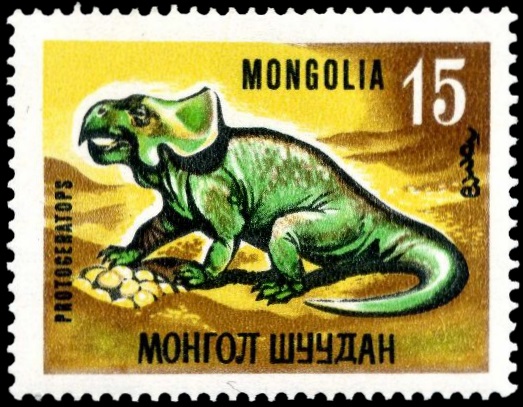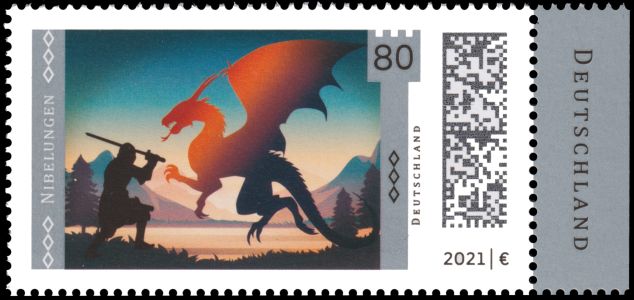Paleophilatelie.eu
is a focal point
between Paleontology and Philately
Myth Creatures
Content
Early Discoveries and Interpretations
Humans have collected fossils since prehistorical times. In December 2024 a group of Spanish scientists published a paper where they claimed Neanderthals collected small marine fossils. They might have been collected simply for aesthetic reasons because they found their shapes attractive for exchange, decorations or as toys. It is also not clear yet if they were collected by adults or children.Early Discoveries and Interpretations
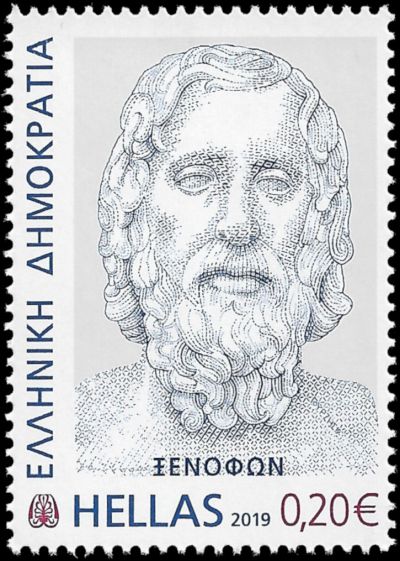 |
 |
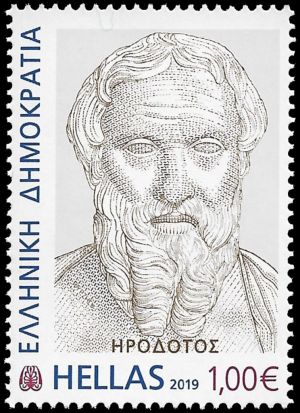 |
| Xenophanes on stamp of Greece 2019 MiNr.: 3042, Scott: 2879 | Pythagoras on stamp of San Marino 1983 MiNr.: 1275, Scott: 1045 | Herodotus on stamp of Greece 2009 MiNr.: 3044, Scott: 2881 |
In ancient Greece, philosophers such as Xenophanes (c. 570–475 BCE) and Pythagoras (c. 570-495 BCE) speculated that marine fossils found in mountains were evidence of flooding by past seas.
The Greek historian Herodotus (c. 484–425 BCE) observed fossilized seashells and marine remains in the mountains of Egypte and Libya. He suggested that these regions were once covered by seawater, supporting the idea that the landscape had changed over time.
This Greek philosopher Empedocles (c. 495–435 BCE) proposed that land and sea had changed places multiple times in Earth's history. While his ideas were more mythical than scientific, they implied an understanding that fossils in mountains could be evidence of past marine environments.
Chinese Dragons probably originated from discoveries of dinosaur and pterosaur fossils. Ancient Chinese referred to unearthed fossil bones as "dragon bones" and documented them as such. For example, Chang Qu in 300 BC documents the discovery of "dragon bones" in Sichuan. This province is known today for abundant fossil discoveries of dinosaurs: sauropods, therapods and early ornithopod and even one of the earliest known stegosaurs, as well as many dinosaur's footprints, trackways and eggs.
In the past, and in the same villages today, they were often ground into medicinal powders.
The numerous bones of ceratopsian beaked dinosaurs, such as Protoceratops and Psittacosaurus, observed on the way to go in the Gobi Desert might have inspired Scythian legends of Griffins. Griffins were mythical creatures with the head and wings of an eagle and the body of a lion. Fossils of these beaked dinosaurs were probably seen by merchants who travel along the Silk-Road, which pass the Gobi Desert, one of the most famous dinosaur fossils location in the world.
The narrow, elongated scapula of beaked dinosaurs resembles that of birds and this avian feature may have suggested to ancient observers that the creature had wings.
 |
 |
| Fossilized skeleton of dwarf elephant on definitive stamp of Malta 2009, MiNr.: 1612, Scott: 1383. | Elephant skull on stamp of Malaysia 2014, MiNr.: 2110, Scott: 1495a. |
Discoveries of skulls of dwarf elephants on Cyprus, Malta and Sicily inspired the myths about cyclops. In the middle ages, in Europe, fossils were assigned to remains of Biblical giants or dragons.
Around the year 1335 a skull of a mysterious animal was discovered near the small Austrian town Klagenfurt. It looked different from anything known to inhabitants of the town.
Because it lookеd different from anything known to inhabitants of the town, they interpreted it as belonging to a dragon. They called this dragon the “Lindwurm” in German. Stories about the Lindwurm state that it lived at the lake before the town was founded and ate virgins. In 1590, Ulrich Vogelsang erected a fountain shaped in the form of this monster.
In 1840, paleontologist Franz UNGER determined the skull belonged to a woolly rhino (Coelodonta antiquitatis), rather than a mystical dragon, who inhabited the area during the Ice Age.
The sculpture is historically significant, because it is an early attempt at reconstructing the appearance of an extinct animal. The skull has survived till today and can be seen in the local Lore museum.
In 1577, the earliest documented mammoth bones were discovered in Switzerland, near the monastery of Reiden, known later in the literature as the "Giant of Reiden", "Giant of Lucerne" or "Swiss Giant", because the bones were interpreted as bones of a giant who lived in the region in the past. The inhabitants of Reiden and Lucerne were so proud of their giant that he was immortalised on one of the panels of the Chapel Bridge at the beginning of the 17th century. The giant adorns the first bridge painting at the entrance to the Chapel Bridge on the left bank of the Reuss. The painting shows the giant in a threatening posture. In his right hand he holds up a torn-out oak tree.
 |
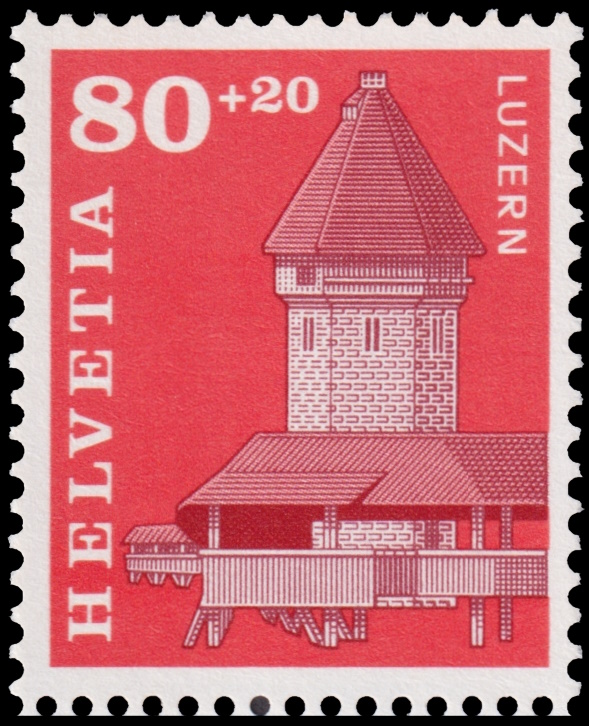 |
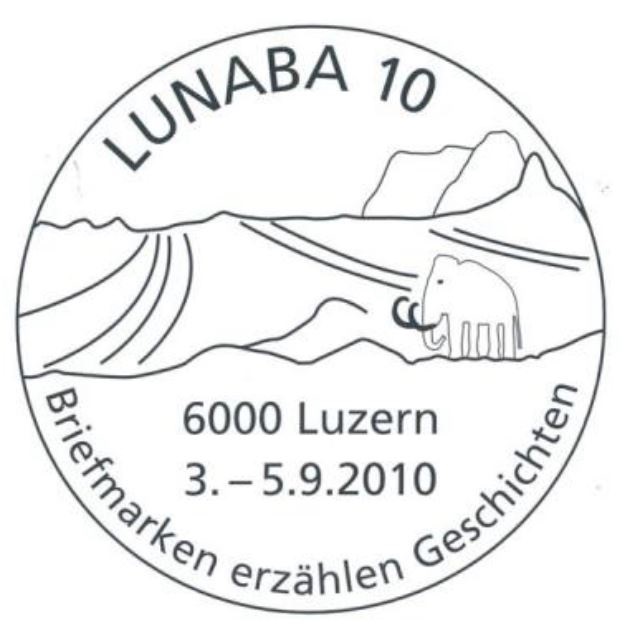 |
|
The Giant of Lucerne on one of the panels of the Chapel Bridge in Luzern.
Image credit: kapellbruecke".
|
The Lucerne Chapel Bridge on stamp of Switzerland 1993, MiNr: 1511, Scott: B590. |
The Mammoth from Lucern on postmark of Switzerland 2010.
|
In 1799, the bones were recognized by he famous naturalist Johann Friedrich Blumenbach (1752-1840) from Goettingen (today Germany) as bones of a woolly mammoth.

|
References
- Ancient Greeks: "The Archaeologist",
